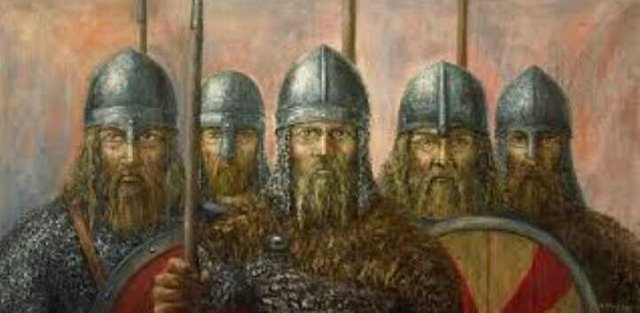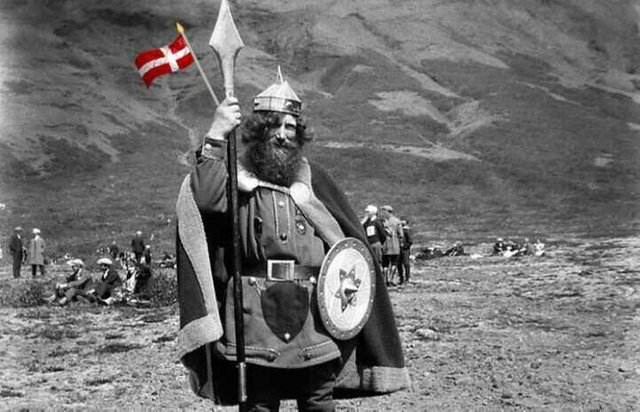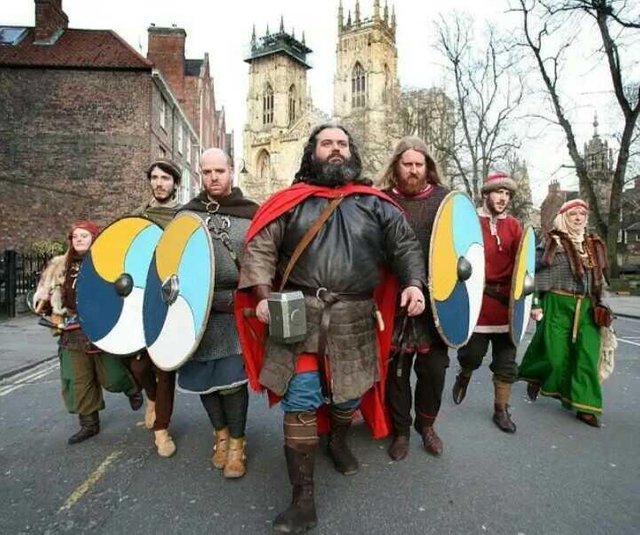Viking : فايكنج

Viking (Old Norse: víkingr) is a term used for Nordic Germans Often on navigators, traders and fighters of the Scandinavian regions Who attacked the British and French coasts and other parts of Europe in the late eighth to eleventh centuries (793 AD-1066 AD) It is called the Viking era and is less commonly used to refer to Scandinavian populations in general. Scandinavian countries and include both from Sweden, Denmark, Norway and Iceland.
Despite the reputation of bad viking and their brutal pagan nature, Viking converted in a century or two to Christianity and settled in the territories they attacked in advance, At the same time, the Vikings built new settlements in Iceland, Greenland, North America, and the North Atlantic, In addition to the establishment of kingdoms on the Scandinavian peninsula along the border with the European kingdoms in the south. As a result of their integration into their new lands, they became farmers and traders as well as rulers and warriors.
The Vikings are known for their craftsmanship and long ships, In a few hundred years they managed to colonize and colonize Europe's coasts, rivers and islands, Where they burned, killed and looted their so-called Viking, which means pirate in the ancient Scandinavian languages.
Viking finishes at the end of the Battle of Stamford Bridge in 1066 AD.
The most important mythological stories of the Viking were the North Sea monster Who believed in the fact that Udine sent him to warn mankind of sin. His pictures of them attacked the Viking at night In the North Sea so they carved his face on the front of their ships believing that they were so evil Their paintings also depicted the need to sacrifice a virgin at the Loch Ness rocks in Scotland to please the beast.
The primary economy of Scandinavia was an agricultural economy, Short agricultural separation was sufficient to meet the need of grain, Cattle feed and stock. And because people in this world lived mostly along the coasts, Fishing and sea trade played an important role in their lives, Even before the Viking attacks, Europe's markets to the south were interested in raw commodities coming from the North Sea and the Baltic, Such as fur, wood, amber, and slaves (who were often brought from the Slavic regions).

الفايكنغ (بالنوردية القديمة: víkingr) مصطلح يطلق علىشعوب جرمانية نوردية غالبا على ملاحي السفن وتجار ومحاربي المناطق الإسكندنافية الذين هاجموا السواحلالبريطانية والفرنسية وأجزاء أخرى من أوروبا في أواخرالقرن الثامن إلى القرن الحادي عشر (793م-1066م) وتسمى بحقبة الفايكينج، كما يستعمل على نحو أقل للإشارة إلى سكان المناطق الإسكندنافية عموماً. وتشمل الدول الإسكندنافية كلا من السويد والدنمارك والنرويج وآيسلندا.
وعلى الرغم مِنْ سمعة الفايكينج السّيئة وطبيعتهم الوثنيّة الوحشية، تحول الفايكينج خلال قرن أَو إثنين من الزمان إلى المسيحيةِ واستقرّوا في الأراضي التي هاجموها مسبقاً، وفي نفس الوقت بنى الفايكنغ مستوطنات جديدةَ في آيسلندا، وغرينلاند، وأمريكا الشمالية، والأطلسي الشمالي، إضافة إلى تَأسيسِ ممالكٍ في شبه الجزيرة الإسكندنافية على طول الحدود مع الممالكِ الأوروبيةِ في الجنوبِ. ونتيجة لاندماجهم في أراضيهم الجديدةِ أصبح منهم المزارعين والتُجّارَ إضافة إلى الحُكَّامِ والمحاربين.
اشتهر الفايكنج ببراعة ملاحتهم وسفنهم الطويلة، واستطاعوا في بضع مئات من السنين السيطرة واستعمارسواحل أوروبا وأنهارها وجزرها، حيث أحرقوا وقتلوا ونهبوا مستحقين بذلك اسمهم الفايكنغ الذي يعني القرصان في اللغات الإسكندنافية القديمة.
يعتبر انتهاء الفايكينج مع انتهاء معركة جسر ستامفورد عام 1066م.
كان أهم القصص الميثولوجية لدى الفايكنغ هي المتعلقة بوحش بحر الشمال الذي كانوا يعتقدون في كون أودين أرسلته كى ينذر البشر من المعاصى فقد صورته لوحاتهم يهاجم الفايكنغ ليلا في بحر الشمال لذا فقد نحتوا وجهه على مقدمة سفنهم معتقدين بأنهم هكذا يتقون شروره كما صورت لوحاتهم ضرورة التضحية بعذراء عند صخور بحيرةلوخ نس باسكتلندا من أجل إرضاء الوحش.
كان الاقتصاد الأساسي لإسكندنافيا اقتصاداً زراعياً، كان الفصلُ الزراعي القصيرُ كافياً لتَلْبِية الحاجة من حبوبِ، وعلف الماشيةِ والمخزون. ولأن الناسَ في هذا العالمِ عاشوا في الغالب على طول السواحلِ، لَعبَ صيدُ السمك وتجارة البحرِ دوراً مهماً في حياتِهم، حتى قبل هجماتِ الفايكنغَ اهتمت أسواق أوروبا إلى الجنوبِ بالسلعِ الخامِ القادمة من بحر الشمال والبلطيق، كالفراء، والخشب، والكهرمان، والعبيد (الذين كانوا يجلبون غالباً مِنْ المناطقِ السلافيةِ).
